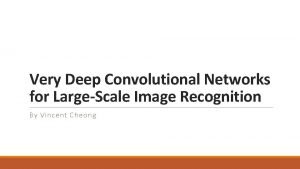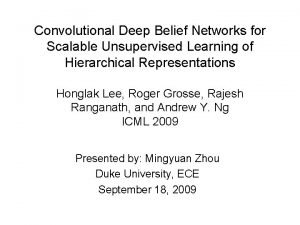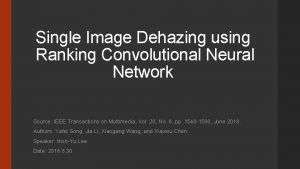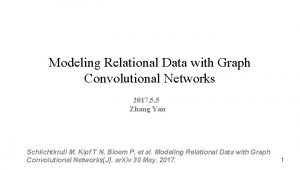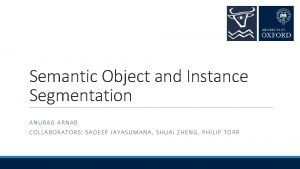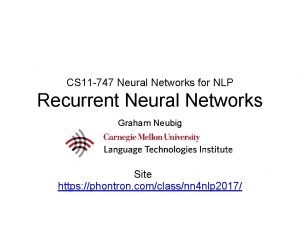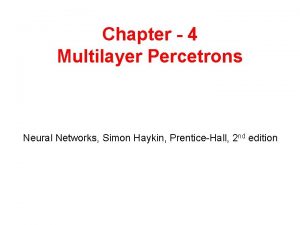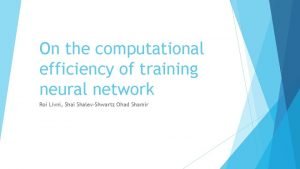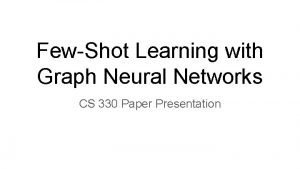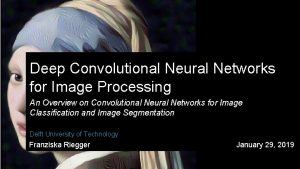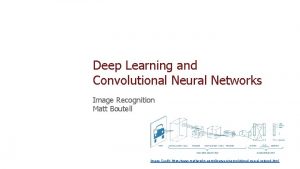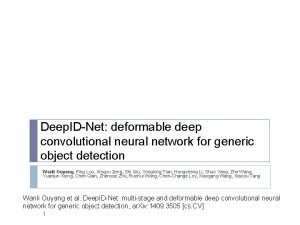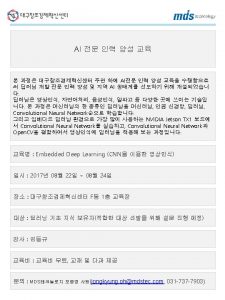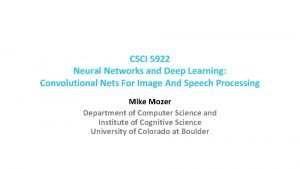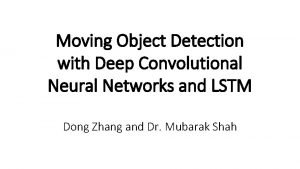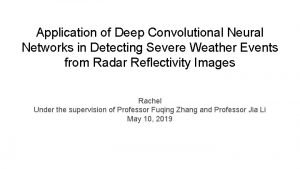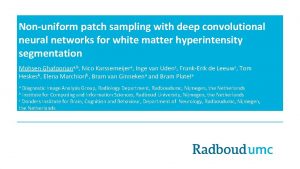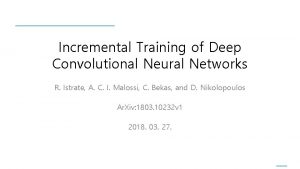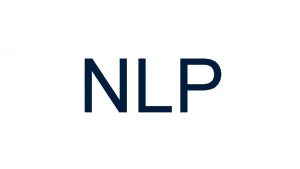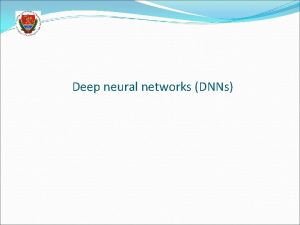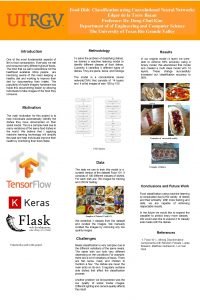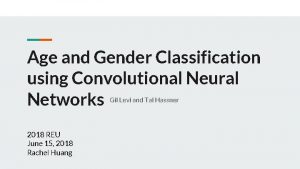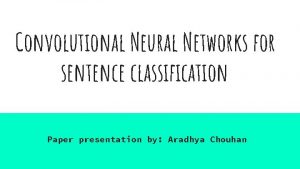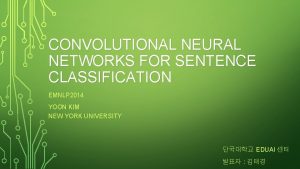Image Net Classification with Deep Convolutional Neural Networks






























- Slides: 30

Image. Net Classification with Deep Convolutional Neural Networks http: //people. cs. ksu. edu/~okerinde /

Introduction Objective: ü To train a large, deep convolutional neural network (on the subsets of Image. Net) to classify 1. 2 million high-resolution images into 1000 different categories. ü To learn about thousands of objects from millions of images

Introduction Dataset: ü Over 15 million labeled high-resolution images belonging to roughly 22, 000 categories ü Amazon’s Mechanical Turk crowd-sourcing tool ü 1. 2 million training images ü 50, 000 validation images ü 150, 000 testing images

Dataset

Terminology ü Deep Convolutional Neural Networks – Convolutional neural networks’ (CNNs) capacity can be controlled by varying their depth and breadth, and they also make strong and mostly correct assumptions about the nature of images (namely, stationarity of statistics and locality of pixel dependencies). ü Object recognition

Methodology ü The Architecture ü Re. LU Nonlinearity ü Local Response Normalization ü Dropout ü Data Augmentation ü Principal Component Analysis ü Stochastic Gradient with Momentum

Re. LU Nonlinearity

Aside Re. LU Nonlinearity Source: http: //cs 231 n. stanford. edu/slides/2017/cs 231 n_2017_lecture 7. pdf

Methodology

Methodology Reducing Overfitting – ü Data Augmentation ü Dropout

Methodology

Methodology

Methodology Data Augmentation Section 4. 1 …discuss

Methodology The Neural Network has: ü 60 million parameters ü 650, 000 neurons ü Five convolutional layers ü Three fully-connected layers ü 1000 -way softmax

Methodology Regularization method used to reduce overfitting – ü Dropout.

Aside Drop. Out… Source: http: //cs 231 n. stanford. edu/slides/2017/cs 231 n_2017_lecture 7. pdf

Methodology Local Response Normalization Section 3. 3. …discuss

Methodology Training Time Complexity: ü Non-saturating neurons ü Efficient GPU implementation of the convolution operation ü Network takes between five and six days to train on two GTX 580 3 GB GPUs

Methodology cs 231 n_2017_lecture 5

Methodology cs 231 n_2017_lecture 5

Methodology Overlapping Pooling Section 3. 4 …discuss

Methodology Details of Learning ü stochastic gradient descent ü Batch size of 128 examples ü Momentum of 0. 9 ü Weight decay of 0. 0005

Methodology cs 231 n_2017_lecture 7

Methodology Details of Learning Section 5 …discuss

Experiments, Result and Discussion Error rates Top-1 => 37. 5% Top-5 => 17. 0% Top-5 error rate is the fraction of test images for which the correct label is not among the five labels considered most probable by the model

Experiments, Result and Discussion

Conclusion and Future Work ü Result showed a large, deep convolutional neural network is capable of achieving record-breaking results on a highly challenging dataset using purely supervised learning ü Network degrades if a single convolutional layer is removed ü Depth is important ü Yet to match the infero-temporal pathway of human visual system ü Future work on video sequences

Resource ü https: //www. youtube. com/watch? v=40 ri. Cqv. Ro. Ms

Similar Paper

THANK YOU FOR LISTENING http: //people. cs. ksu. edu/~okerinde/
 Leon gatys
Leon gatys Image super resolution using deep convolutional networks
Image super resolution using deep convolutional networks Deep forest towards an alternative to deep neural networks
Deep forest towards an alternative to deep neural networks Visualizing and understanding convolutional networks
Visualizing and understanding convolutional networks Convolutional neural networks for visual recognition
Convolutional neural networks for visual recognition Stride in cnn
Stride in cnn Csrmm
Csrmm Xooutput
Xooutput Lmu cis
Lmu cis Convolutional neural networks
Convolutional neural networks Convolutional neural network alternatives
Convolutional neural network alternatives Deep convolutional networks
Deep convolutional networks Convolutional deep belief networks
Convolutional deep belief networks Efficient processing of deep neural networks pdf
Efficient processing of deep neural networks pdf Mippers
Mippers Feature map in cnn
Feature map in cnn Modeling relational data with graph convolutional networks
Modeling relational data with graph convolutional networks Instance segmentation
Instance segmentation Vc bound
Vc bound Ib psychology
Ib psychology Audio super resolution using neural networks
Audio super resolution using neural networks Least mean square algorithm in neural network
Least mean square algorithm in neural network Pixel recurrent neural networks.
Pixel recurrent neural networks. Matlab neural network toolbox
Matlab neural network toolbox Neural networks for rf and microwave design
Neural networks for rf and microwave design 11-747 neural networks for nlp
11-747 neural networks for nlp Xor problem
Xor problem On the computational efficiency of training neural networks
On the computational efficiency of training neural networks Tlu perceptron
Tlu perceptron Fuzzy logic lecture
Fuzzy logic lecture Few shot learning with graph neural networks
Few shot learning with graph neural networks











